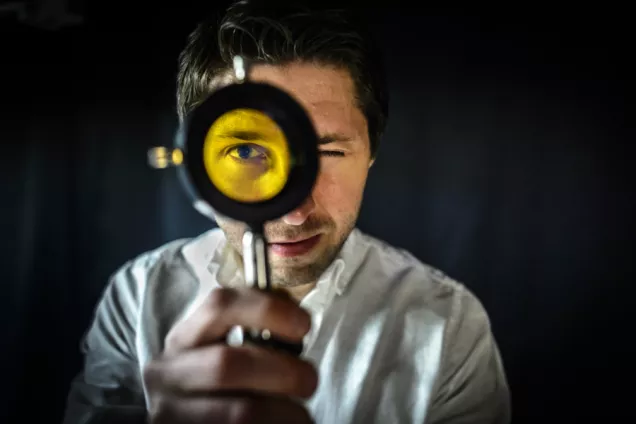A close collaboration between researchers in sustainable production and materials engineering and researchers at NanoLund is now taking a step up and together they are developing new initiatives.
“Different materials have different limitations and behave in different ways. These can be identified during experiments at MAX IV and ESS”, says Jan-Eric Ståhl, professor in Production and Materials Engineering and the Sustainable Production Initiative, Lund University.
Two years ago, Alfa Laval, together with experienced researchers at Lund University in Production and Materials Engineering and at NanoLund, carried out a state-of-the-art experiment at the synchrotron radiation facility MAX IV. The experiment studied how the thin oxide on stainless steel reacts to high temperatures, water and air. It provided valuable insights into how to protect products from corrosion and the knowledge has been used in Alfa Laval’s product development.
Collaboration on significant challenges
Using large research facilities such as MAX IV requires knowledge and good planning. For industrial companies, the value it can provide must be clear for them to engage in experiments and collaboration projects.
“If we are to meet the current challenges regarding digitalisation, recycling and resource efficiency from an industrial perspective, we must collaborate”, says Anders Mikkelsen, professor in Synchrotron Radiation Physics, Lund University, and Director of NanoLund.
It is not only collaboration between a university department and different industrial companies that is required. Knowledge from several different disciplines is important as well as contributions from those working on basic research issues. Industrial companies complete the picture with experience of innovation processes and the transfer of new knowledge and technologies to products and services.
One amalgamation of this work results in what are known as demonstrators, people demonstrate how the research can be put into practice and provide answers to the research issues that are valuable for industry’s needs and applications.
The research within sustainable production will provide new knowledge primarily for use in the manufacturing industry with a focus on long-term sustainability. The research is broad and includes a focus on the development of manufacturing technologies for everyday products such as different tools or automotive parts.
“It can provide the basis for one or several research issues. Changes or solutions to these research issues can lead to value-creating product enhancements”, explains Jan-Eric Ståhl.
Valuable for industry
In December 2021, the next steps were taken in the research collaboration initiated in 2020. In addition to Alfa Laval, Sandvik Materials Technology, Tetra Pak, Thermo-Calc Software and researchers at Lund University took part. The laboratory experiments carried out at MAX IV focused on how oxide reacts to corrosive salty mediums. The conditions that metals are exposed to in various industrial processes were simulated to gain a better understanding of corrosion.
The results from the study will be used in the company’s development work to produce more efficient materials and processes. The manager of Alfa Laval’s Energy Division, Thomas Møller, was very happy with the outcome:
“We are really enthusiastic about this research collaboration with partners from both industry and experienced researchers from the University. The experiment will provide us with a better understanding of corrosion, which is a challenge in many industrial processes. It strongly contributes to our research and development work and will provide our customers with more sustainable and effective solutions.”
Unique collaboration model
The fact that many different companies participated in the latest experiment, representing the whole chain from manufacturers of the material and products to those who use and sell them, was a great success. The plan is to develop this collaboration model and to clearly demonstrate the value creation for many actors.
Filip Lenrick, project manager and researcher in the Sustainable Production Initiative and NanoLund, was present during the experiment. He also believes in the development of this work method:
“It is very inspiring to collaborate in this way. When companies are involved in the whole process, from application to design and implementation of an experiment and in the data analysis, it leads to great synergy effects. To bring everyone together and engage us all in the value chain with actors from academic research, material production and representatives from manufacturing of equipment and process development – it is unique!”

